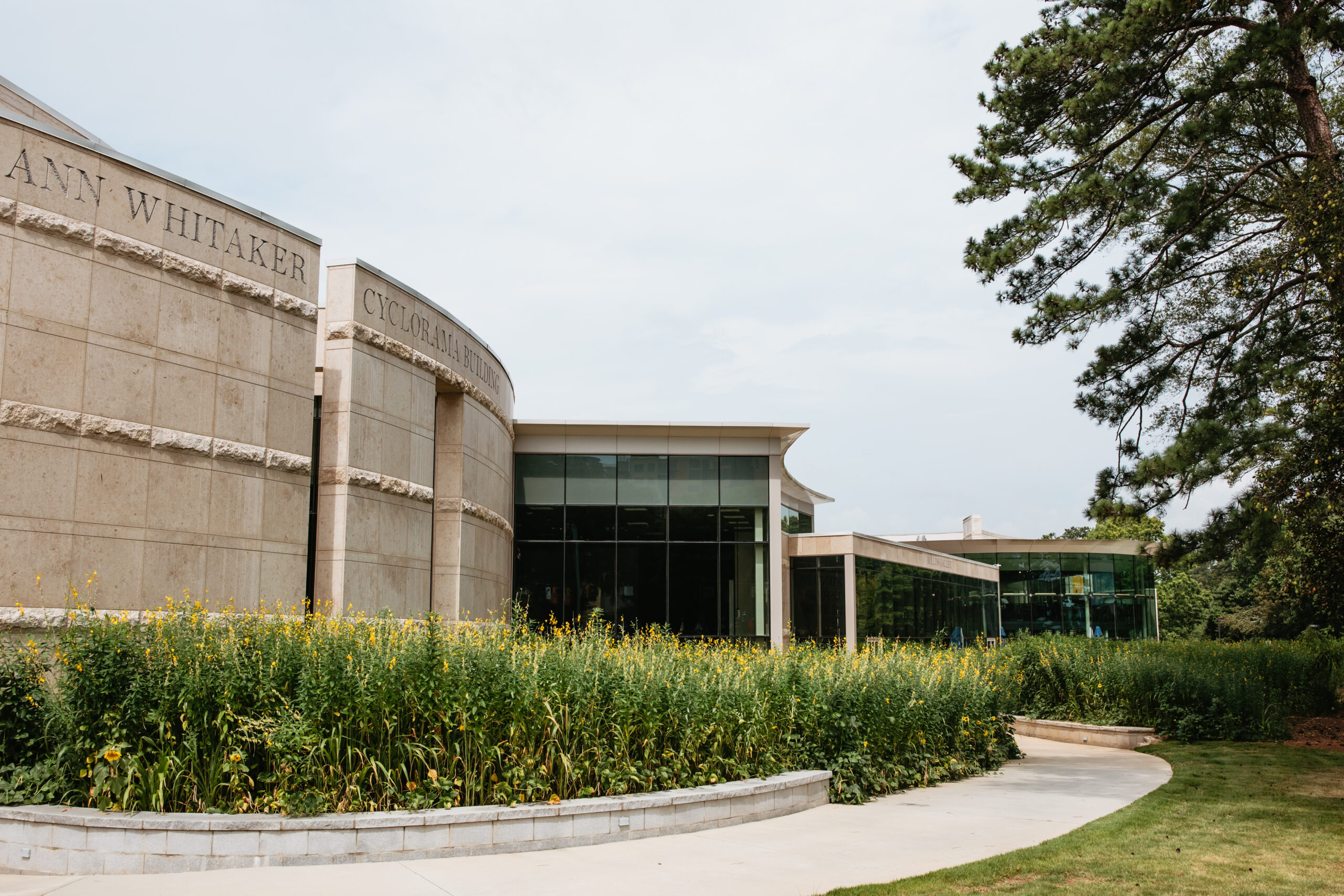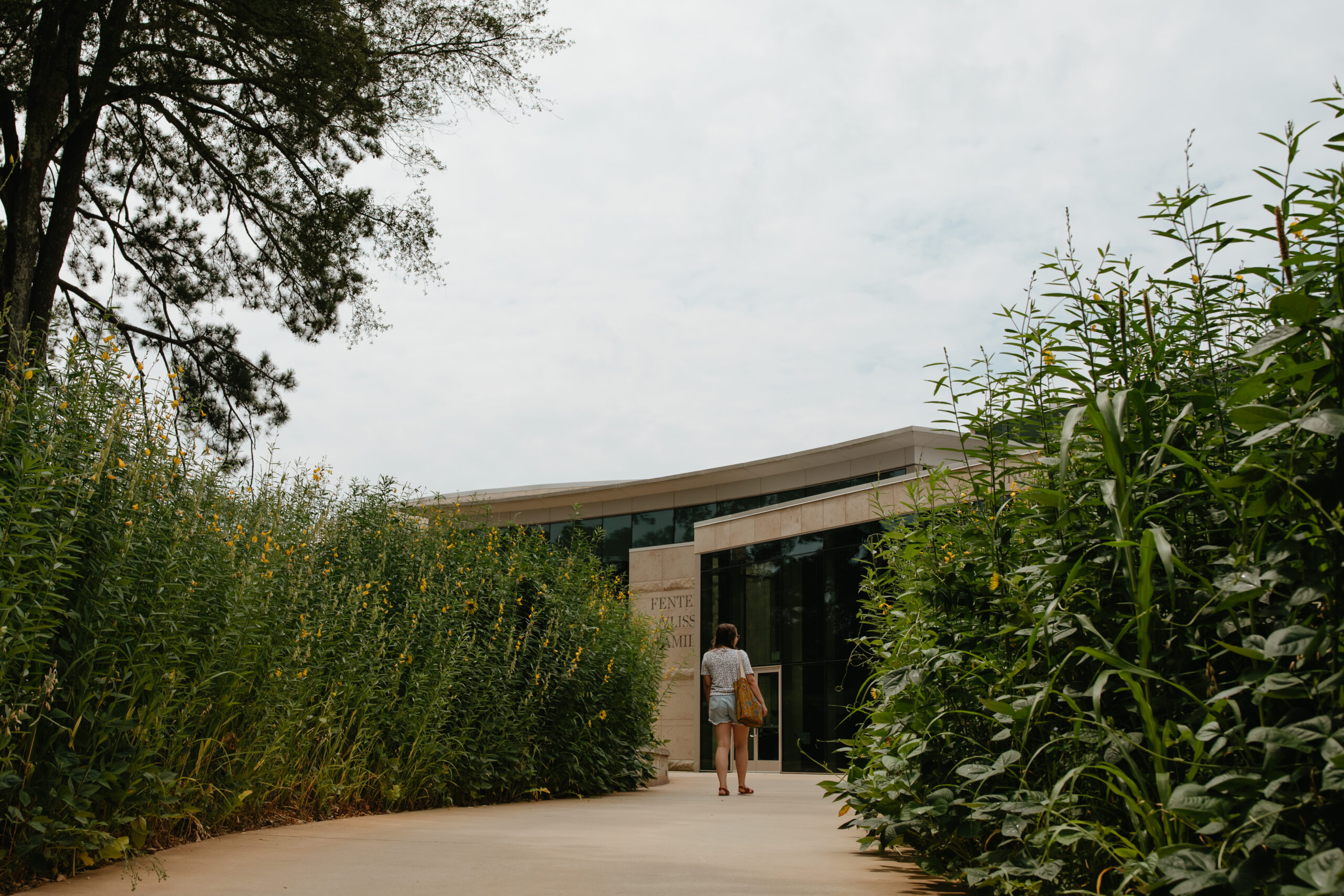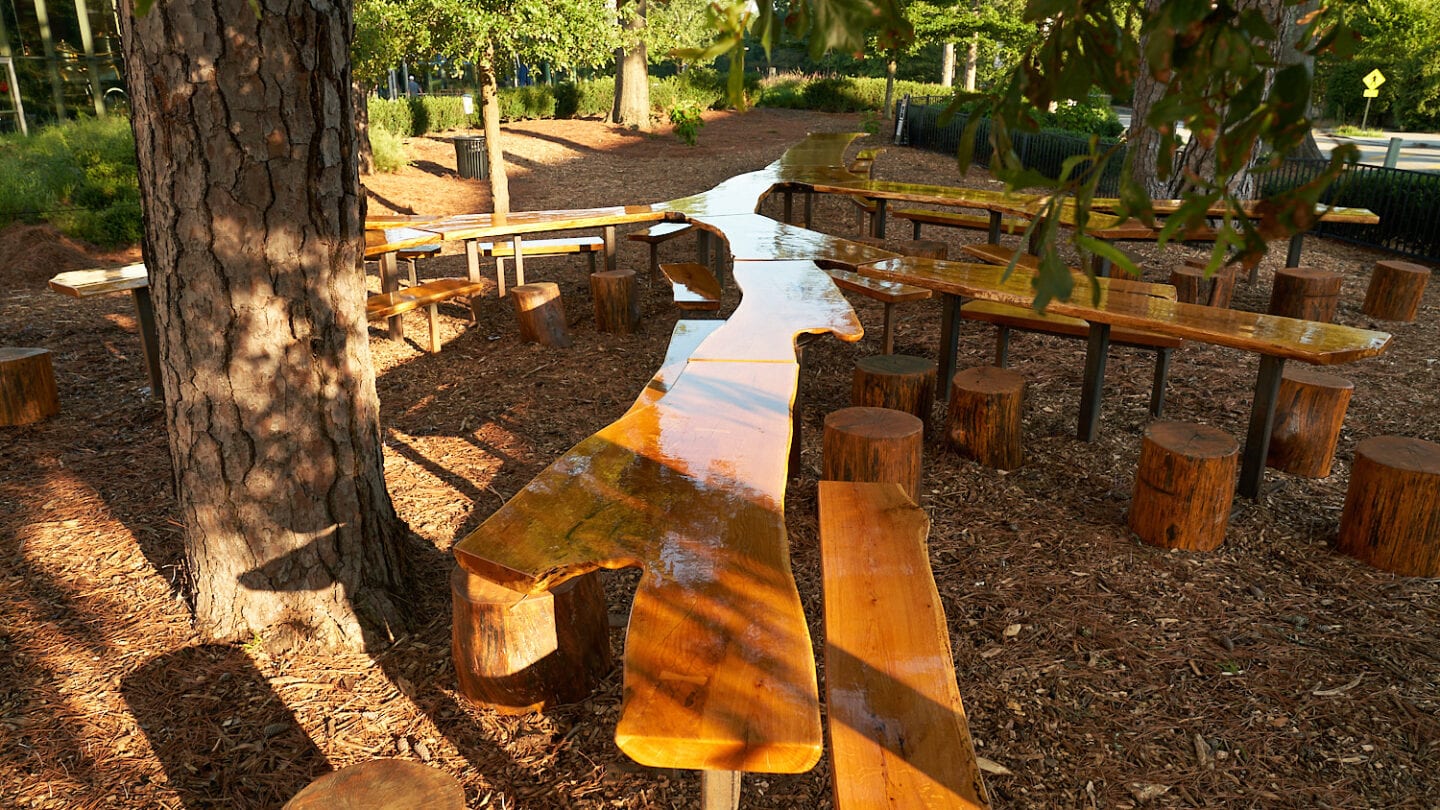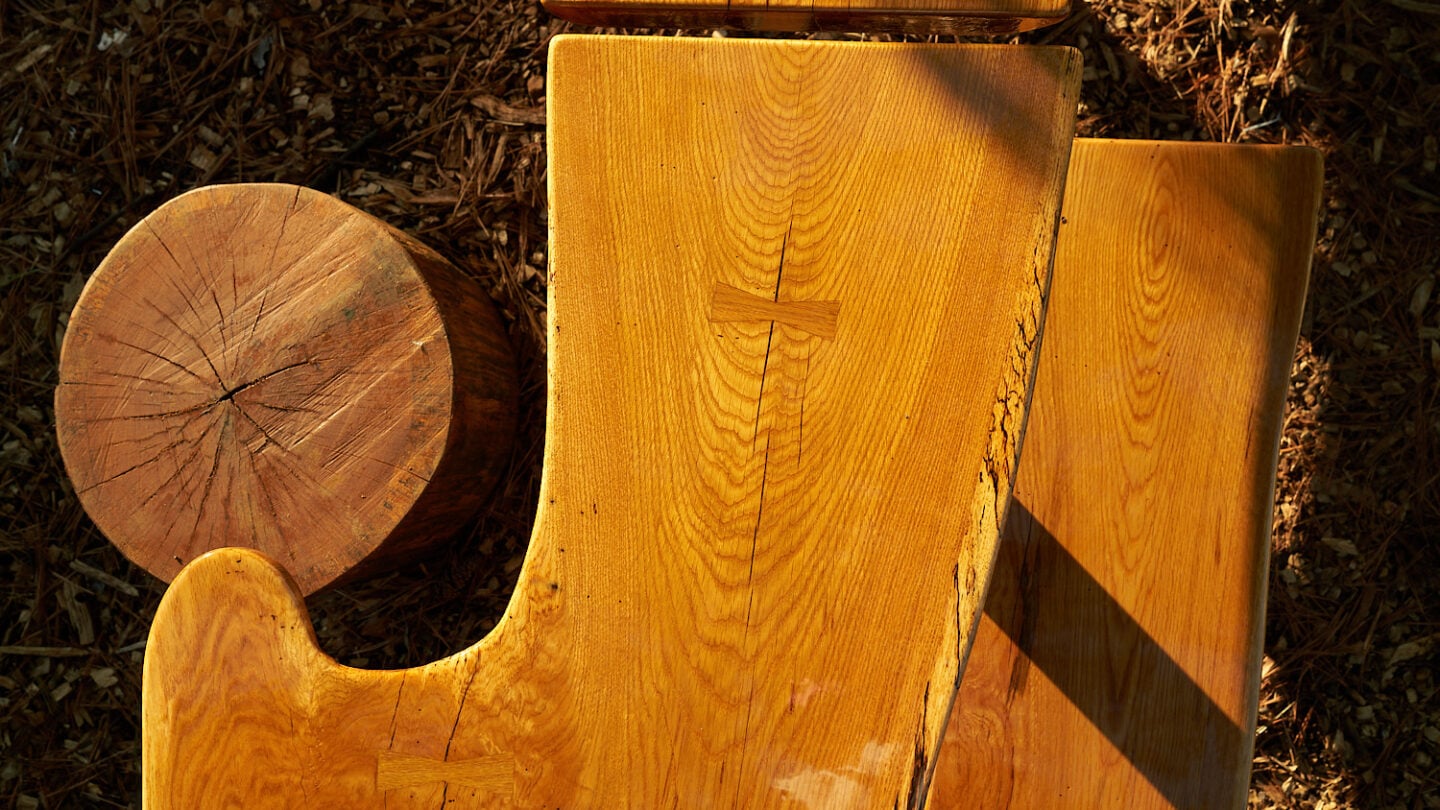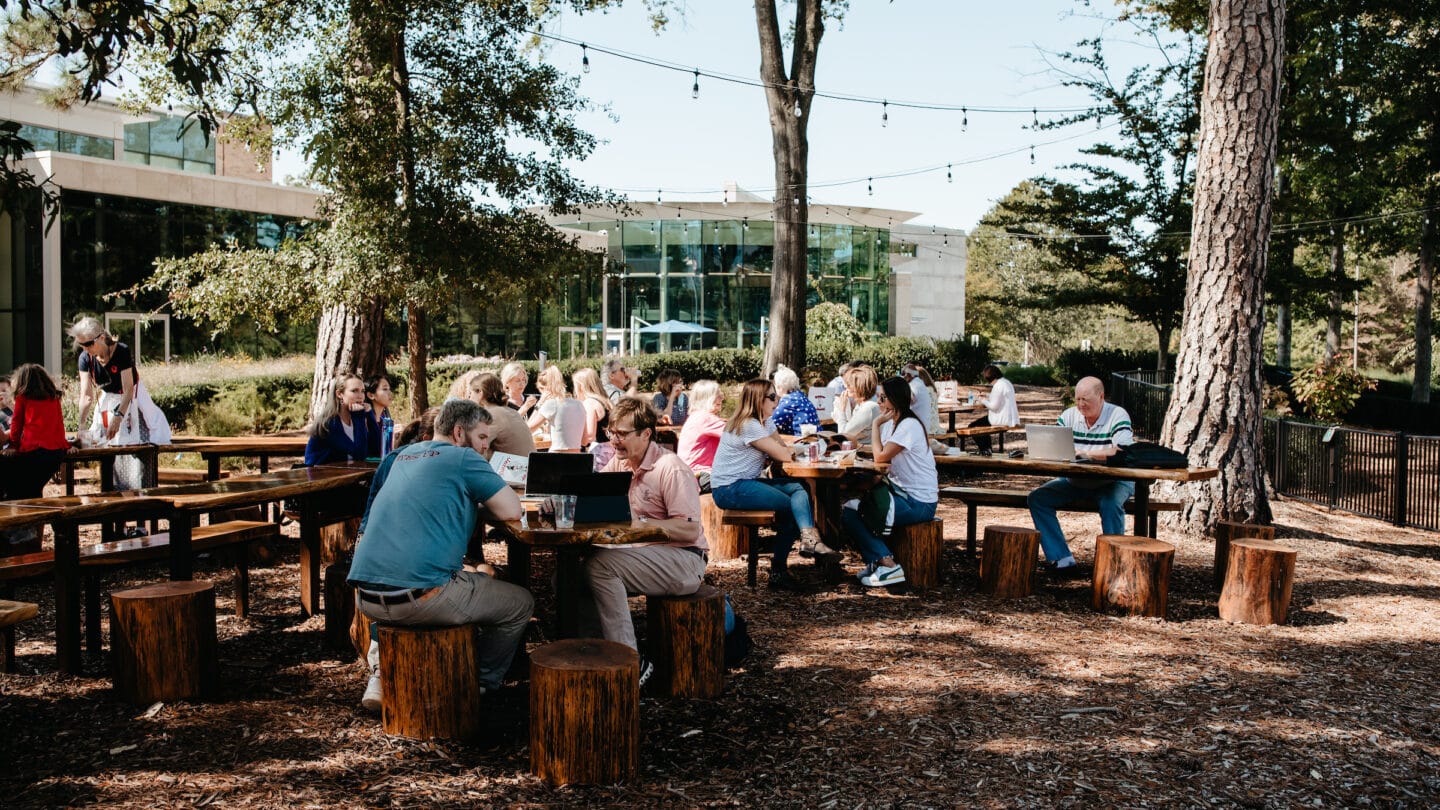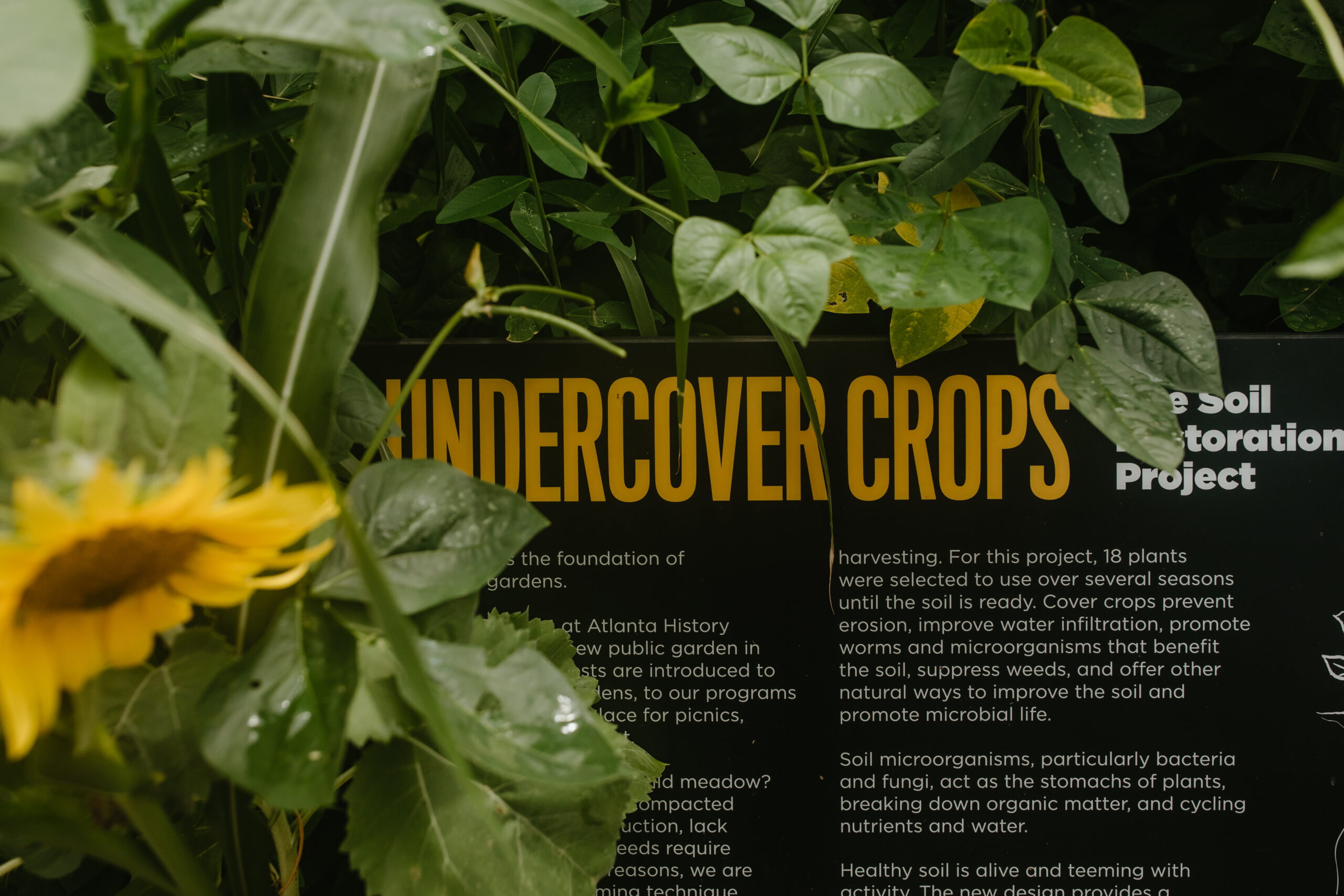
Healthy soil is full of life. In one teaspoon of soil, there are more than 1 billion bacteria alone. There are also fungi, nematodes, protozoa, and earthworms, all of which perform an incredible range of activities that make plant life, and therefore human life, possible. Rejuvenating soil cannot be solved with fertilizers—it requires a biological approach.
This is soil science.
Since the announcement in July 2014 that Atlanta History Center would serve as the new home for The Battle of Atlanta Cyclorama, plans began for the construction of the Lloyd and Mary Ann Whitaker Cyclorama Building. This complex construction project involved digging the equivalent of several stories into the ground, hauling out 3,300 truckloads of subsoil, and many months of heavy machinery traversing the surrounding landscape. Protection measures safeguarded critical areas, but significant soil compaction occurred where access was required for heavy machinery.
When soil gets compacted, all the small pockets of air and water between soil particles are eliminated, and the soil becomes a hard, solid mass, impenetrable by roots or water. Much of the microbial life in soil is also snuffed out, unable to survive in that environment.
Goizueta Gardens staff addressed the compacted soil with a historic practice called cover cropping. A cover crop is a specific plant that is grown for the benefit of the soil rather than the crop yield. Eighteen species were selected for use in the former construction site.
Each species selected performs a different service to the soil and all reduce erosion. Some plants send down long, thin roots several feet deep to hunt for nutrients and bring them to the surface, while others have a fat, carrot-like taproot that drill through the hard soil. Some create a huge amount of leafy biomass that can be tilled under to fluff the soil and add organic matter.
As microorganisms break down the organic matter, nutrients are released into soil for uptake by plants. Roots of these short-lived species decompose and create channels for the movement of water, a head start for the next generation’s plant roots, and pathways for microorganisms.
From fall 2019 through spring 2020, this enriched soil was planted following a modern design concept based on the New Perennial Movement—a sweeping matrix of grasses and flowering perennials that seeks to redefine traditional aesthetics of a garden and reestablish a human connection to nature.
A key piece of the new garden is a gathering space for all—a common table, the Tree Table, to share conversations. What was once a dying oak on campus has been transformed into a sixty-foot-long artistic table in the shape of the tree’s original form.
The new Entrance Gardens serve as the botanical welcome to Atlanta History Center’s 33-acre campus—a testament to the importance of environmental stewardship, Goizueta Gardens Living Collections, and public gardens in learning our history.


